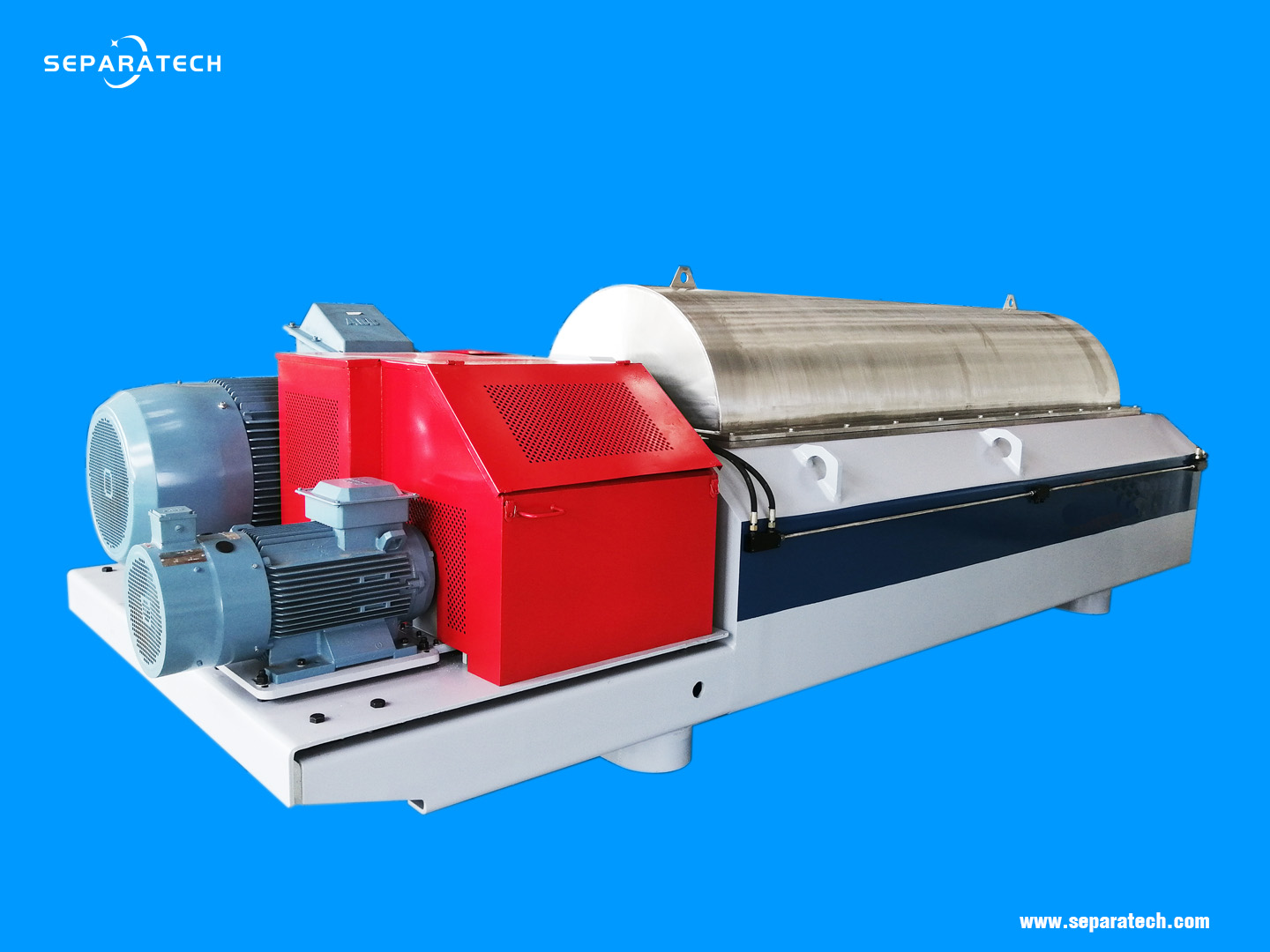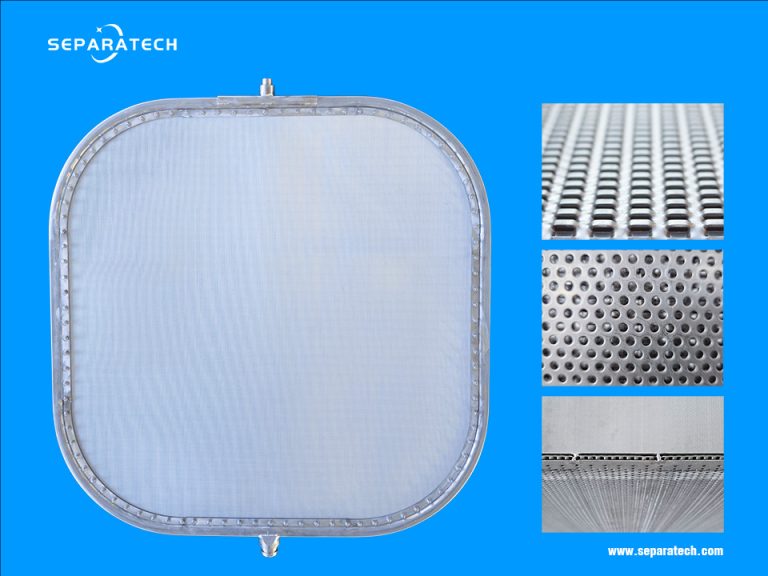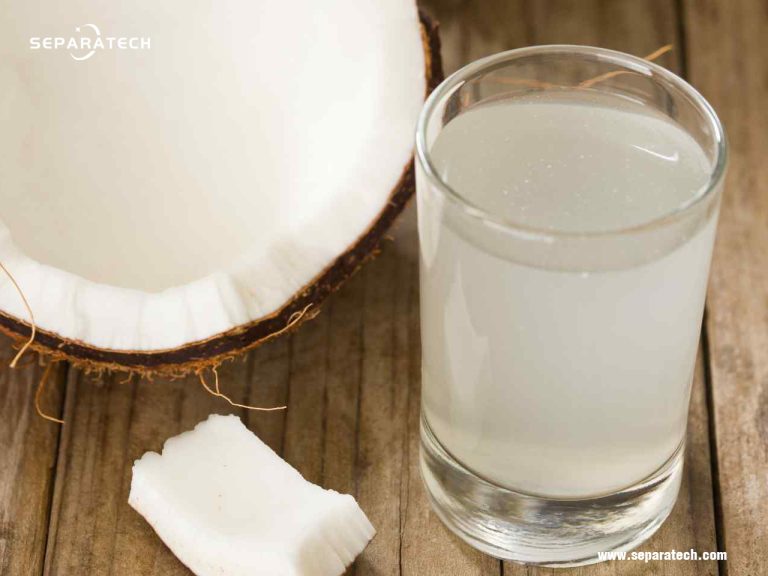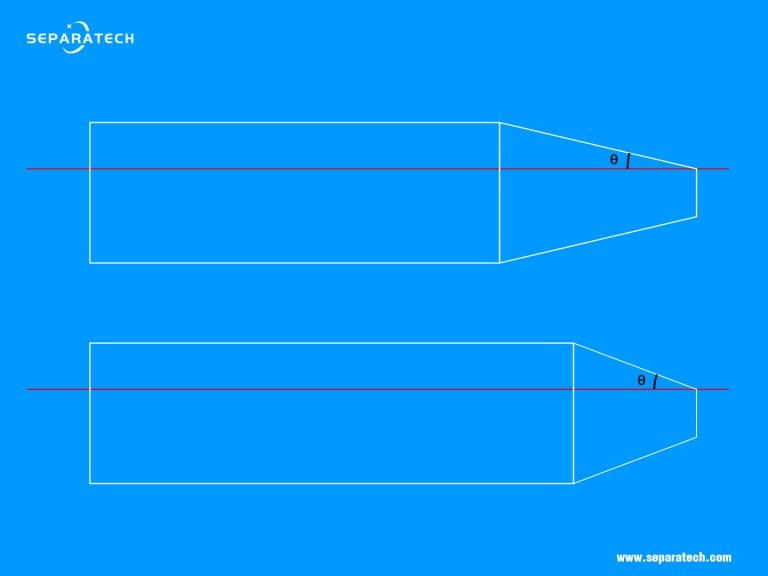Fish oil, a valuable byproduct of fish processing, has gained prominence for its health benefits and industrial applications. Extracting high-quality fish oil involves intricate steps, and one crucial tool in this process is the 3-phase decanter centrifuge. Let’s dive into the science behind this remarkable equipment.
The most important facet of fish meal and fish oil production is efficient separation of the three main components of the raw material – dry substance (protein), fat and water while keeping contact time to a minimum. Central to the process is the heating stage which brings about coagulation of the protein and opens up the cells containing the fat to release the oil. This stage is critical for the quality and yield of the end products.
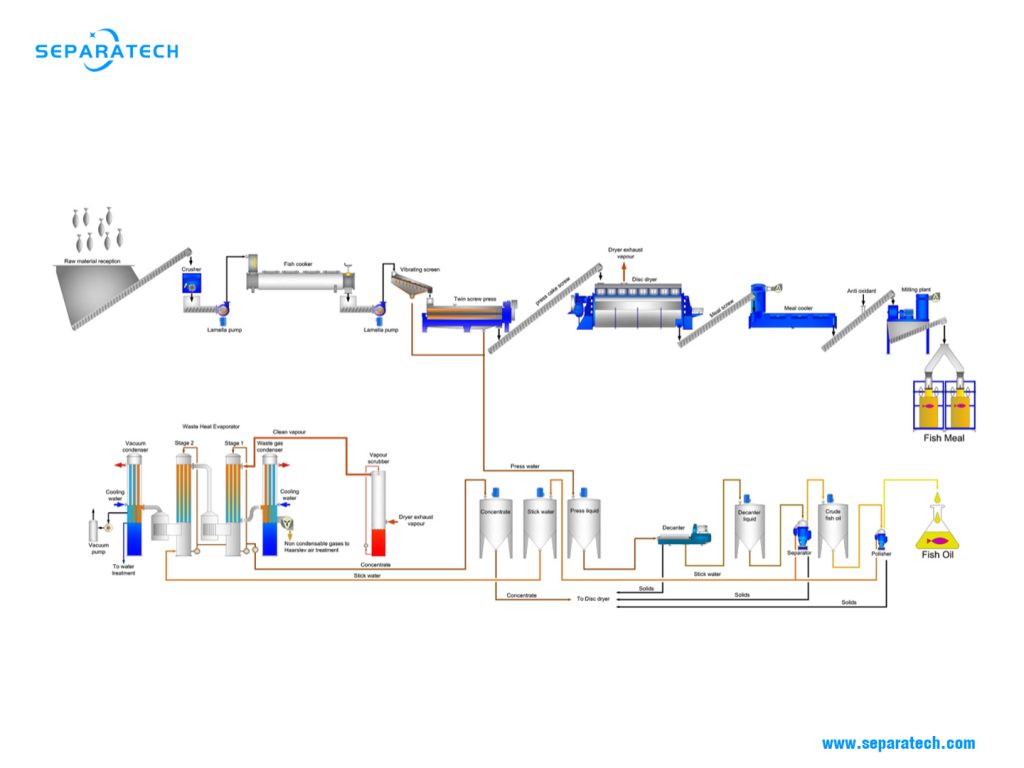
Conventional process for the recovery of fish meal and fish oil
Separation is affected mechanically in presses and by separating water and fat, and thermally by evaporation and drying. The mean water content of the raw material varies between 65% and 75%, and it is thus self-evident that the separation of water is an important factor in the production process. Depending on the type and condition of the raw material, industry fish and fish waste are processed into fish meal and fish oil either in a conventional method, i.e. cooker-screw-press decanter, or in the conventional process, cooker-decanter-screw press. The processing plant is state-of-the-art, enabling all species of fish to be processed with acceptable throughputs and analyses of the end products. These processing plants are fully automated from the raw material feeder to the bagging of whole meal or the storage of pure oil.
How does a 3-phase decanter centrifuge work?
The 3-phase decanter centrifuge design ensures separation of the incoming press water into three phases – fish oil, solids and water. The press water is fed into the bowl through a stationary inlet tube and is then smoothly accelerated by an inlet rotor. Separation takes place in a horizontal cylindrical bowl equipped with a screw conveyor. Centrifugal force causes instant sedimentation of the solids on the wall of the bowl. The conveyor rotates in the same direction as the bowl, but at a different speed, and conveys the solids to the conical end. Because it is lighter, the fish oil flows on the inside, and the solids move towards the outer perimeter, while the water remains in the middle. Separation takes place along the entire length of the cylindrical part of the bowl. Fish oil and water are separated in the liquid Zone and are decanted and discharged from the bowl through two discrete discharge systems to prevent cross-contamination. The water phase is discharged through axial holes in the large end hub, and fish oil phase discharged out of the bowl under pressure by adjustable impeller.
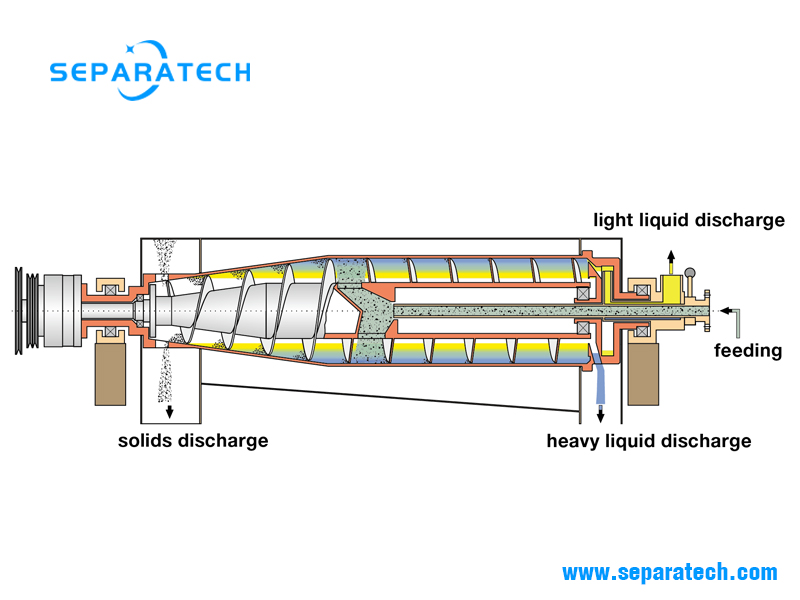
What is a 3-Phase Decanter Centrifuge?
A 3-phase decanter centrifuge is a specialized separation device used in the fish processing industry. It efficiently separates a mixture into three distinct phases:
Light Phase (Fish Oil): This phase contains the precious fish oil. It’s the liquid gold that holds omega-3 fatty acids, vitamins, and other bioactive compounds.
Heavy Phase (Protein Water): The heavy phase consists of protein-rich water. It contains hydrolyzed proteins and other nutrients.
Solid Phase (Fish Residue): The solid phase comprises fish residues, including scales, bones, and other non-oil components.
3-phase Decanter Centrifuge applications:
– Conventional process
– 3-phase process
– Whole fish process
– Production of surimi
– Recovery of protein hydrolyzate
– Production of food grade fish oil
– Treatment of canning wash water
– Treatment of fish pump water
Adjustable impeller
The adjustable impeller (skimmer), which is so called centripetal pump, allows the interface between the two liquid phases to be optimally adjusted without centrifuge stop if changes in the density differential or in the quantity ratio of the two liquids occur. The adjustment during the operation of the centrifuge ensures maximum purity of both liquid phases. Decanter centrifuge with discharge of clarified liquid under pressure. With this design clarified liquid is discharged foam free and under pressure by a adjustable centripetal pump (paring disc).
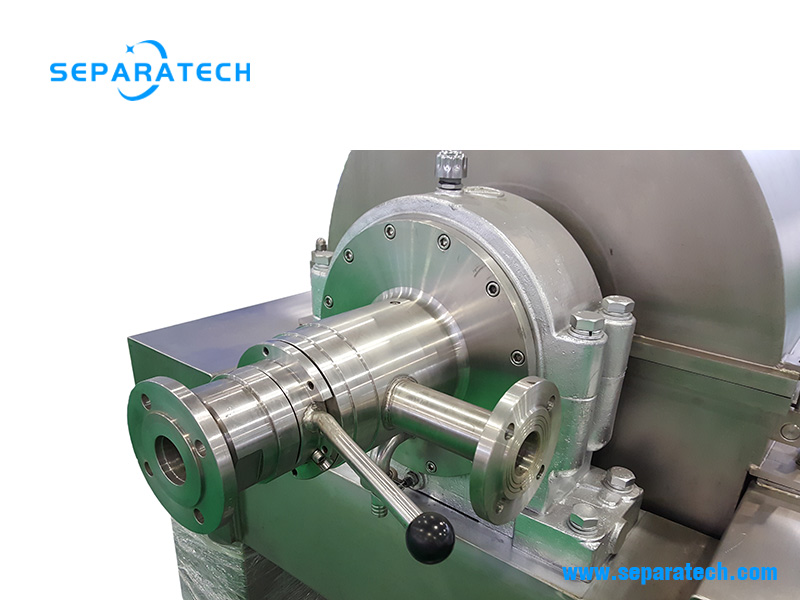
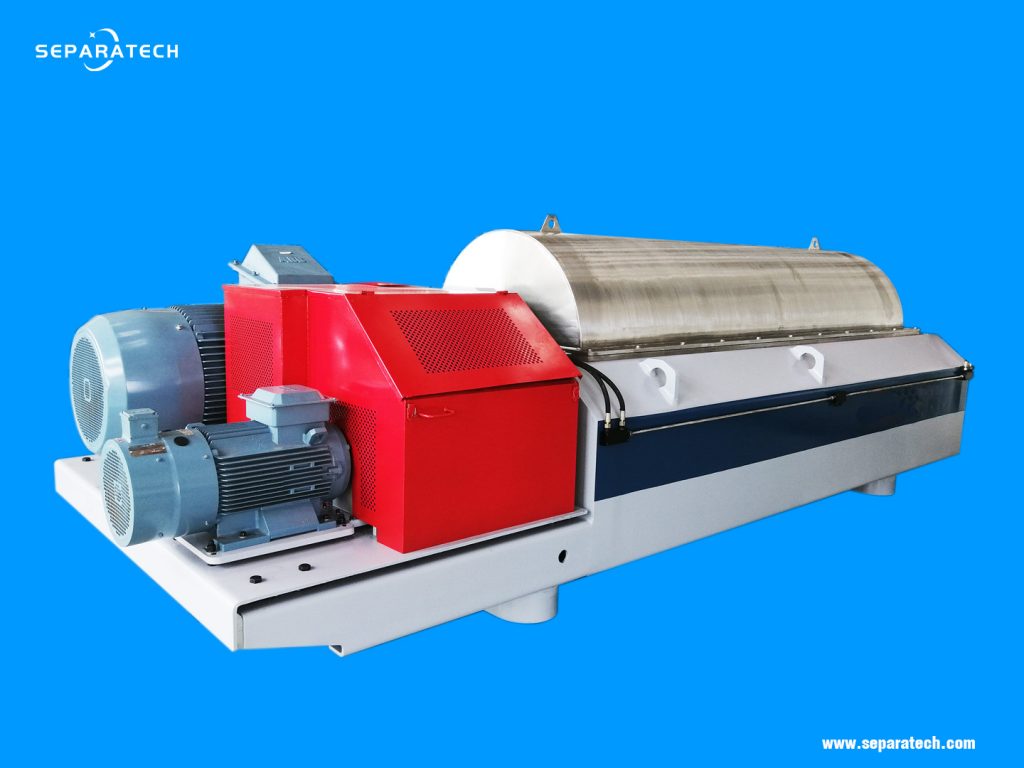
Fish Meal and Fish Oil Recovery Process with 3-Phase Decanter Centrifuge
3-phase Decanter Centrifuge for Fish Oil process, the raw material is heated in a cooker to coagulate the protein whilst the fat-containing cells are gently disintegrated so that the oil is released. The cooked raw material is fed to a screw press before a 3-phase decanter centrifuge separates the press water cleanly into solids, water and oil. SEPARATECH offers several discharge systems for 3-phase decanter centrifuges. The two liquid phases can either be discharged freely or via adjustable impeller. In the case of adjustable impeller, the separation zone in the decanter centrifuge bowl can be externally adjusted. The separated solids are directly conveyed to the dryer along with the press cake from the press. The stickwater or heavy liquid phase from the decanter centrifuge is evaporated before it is dried and processed into fish meal. As the oil phase from the decanter centrifuge may still contain small residues of free water and solids, a 3-phase disc separator for polishing is recommended downstream to remove even those tiny impurities. The result is purest fish oil.
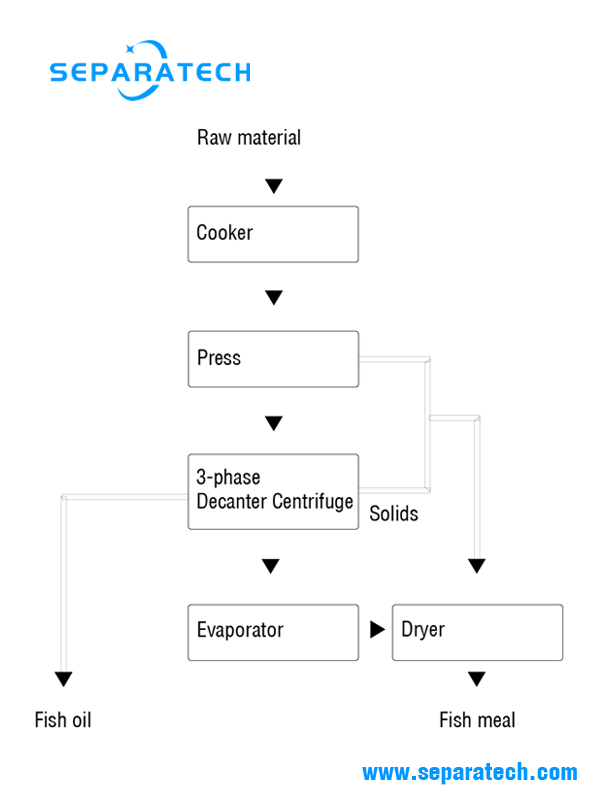
Technical specifications
| Designation | Bowl diameter (mm) | Bow speed (rpm) | Capacity (m3/h) | Power (Kw) | Weight (Kg) |
|---|---|---|---|---|---|
| AFS3540 | 355 | 4000 | 2,000 | 22 | 1800 |
| AFS4240 | 420 | 3600 | 10,000 | 30 | 2600 |
| AFS5040 | 500 | 3000 | 15,000 | 37 | 3500 |
| AFS5840 | 580 | 2800 | 25,000 | 55 | 6200 |
| AFS6240 | 620 | 2600 | 35,000 | 75 | 7500 |
Over the years, 3-phase decanter centrifuge have been widely used for the recovery of fish meal and fish oil.
With specifically designed 3-phase decanter centrifuge for the different processes as well as the tough demands fish processing makes on centrifugal separation equipment, SEPARATECH makes for top quality fish meal and fish oil and reliable processes at the same time.
